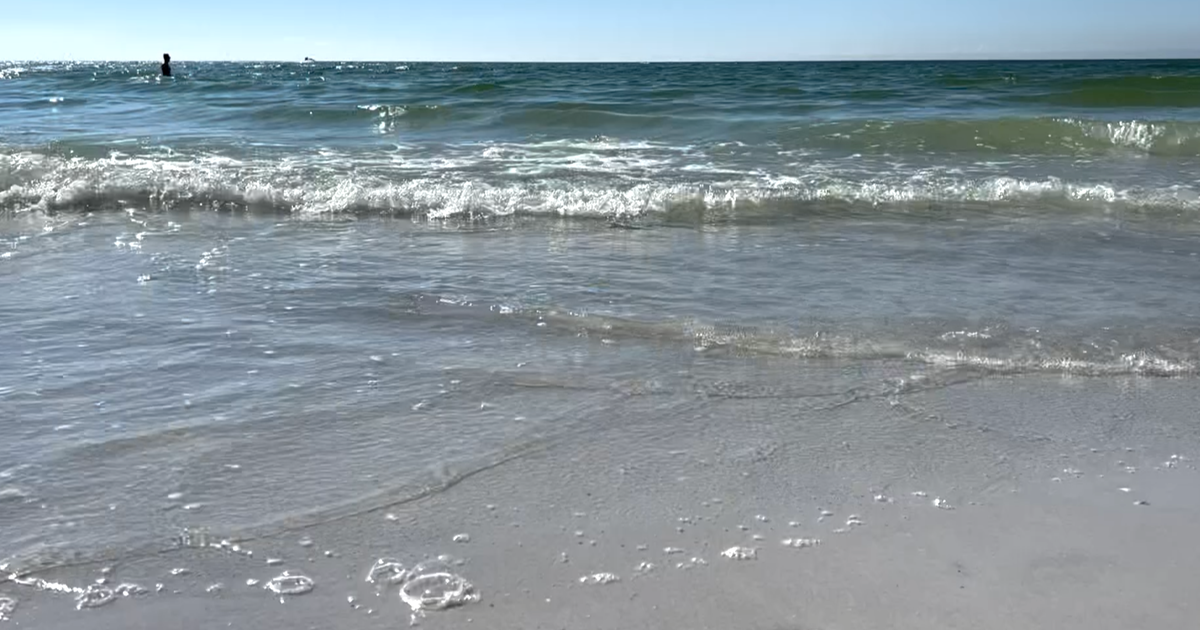Flesh-Eating Bacteria Infects Two Women In Florida, Killing One
MIAMI (CBSMiami) – The family of a Florida woman who died after being infected by a flesh-eating bacteria at a beach is alerting others to the warning signs.
77-year old Lynn Fleming died last week. She had been walking near her home along the Gulf of Mexico coastline when she stumbled, ending up with a small cut on her shin.
"Went for a walk around a surf wall and she stumbled, she had a cut there," said Wade Fleming who never imagined something so small would end his mother's life.
Days later she was rushed to the hospital with necrotizing fasciitis, a rare deadly bacterial infection that kills the body's soft tissue.
"She didn't know that there was a small ditch there and she stumbled and hit the embankment on the other side," her son, Fleming said. "She had a small little 3/4-inch long cut on her shin bone."
It is a rare occurrence, but now some communities in Florida are especially concerned. Even when it's diagnosed, the effects can be deadly.
In the days following her fall in the water, Lynn's condition worsened.
She was rushed to the emergency room by ambulance and was diagnosed with necrotizing fasciitis, a rare but deadly bacterial infection that kills the body's soft tissue.
The infection rapidly spread through Fleming's body. She died only two weeks after her fall.
It is believed to be the second case of necrotizing fasciitis at a Florida beach in just the past month.
"This is a dramatic infection, infection," said Broward Health emergency Doctor Jason Mansour who added that while it's rare, we should all be aware exists when you head to the beach
"It's an aggressive bacteria, an infection that travels under the skin and causes tissue death," he said. "Patients come in with severe pain and by late in the day it spreads up their leg."
A 12-year-old Indiana girl visiting Florida with her family also contracted the flesh-eating disease, but fortunately, she survived.
Doctors say after several surgeries and months of therapy, she should be back to normal.
"If the bacteria gets into the bloodstream and causes sepsis and multi-system organ damage, then, of course, the death rate is much higher," said Dr. William Shaffner, infectious disease specialist at Vanderbilt University Medical Center. "Up to a third of people who have this serious infection can die from it."
According to the CDC, upwards of 1,200 cases occur in the U.S. each year. Doctors say it must be caught early.
"Fortunately, flesh-eating bacterial infections are not common," Shaffner said. "And the key thing is, of course, if you've had any kind of wound and you start to feel badly, please seek medical attention right away."
Wade Fleming wants people to know the warning signs so others may have a fighting chance.
"Maybe if she was diagnosed a little earlier, you know, maybe we'd be sitting here talking to my mom without a leg, but you know, with a life," Fleming said.
Even though there's frequent water testing at Florida beaches it doesn't include testing for the flesh-eating bacteria.
Doctors say if you have an open wound and you've been in the water, look for early warning signs, including fever, severe pain, and a rapidly spreading swollen area.
"When you have a cut avoid the wound being exposed to natural bodies of water," said Mansour.
While salt does kill some forms of bacteria, the flesh-eating bacteria thrives in warm, salty water similar to many spots along the Gulf. A recent study suggests rising ocean temperatures could help the bacteria thrive in waters previously unaffected.



